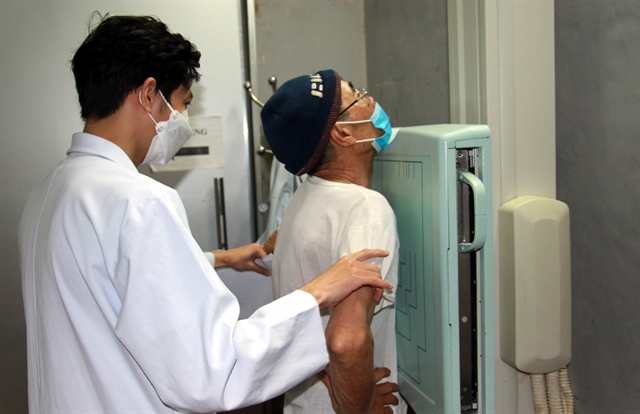 Society
Society

Nearly 400 primary school students in the southern province of Hậu Giang underwent medical examinations yesterday morning after drinking free milk at school, 30 of them were hospitalised with symptoms of digestive disorder.
HẬU GIANG — Nearly 400 primary school students in the southern
The students from
Nestle Việt Nam Ltd Company has not made an official comment. A communications representative from the company told Việt Nam News late yesterday that it received information from the local healthcare centre that only 30 students were hospitalised with symptoms of digestive disorder after drinking milk. Hundreds of other students just went to the healthcare centre for medical checks.
Trương Văn Chín, chief of office of the town People’s Committee, said that on Friday afternoon, three students were still at the town’s healthcare centre for treatment.
Ngã Bảy Town’s Preventive Medicine Centre is taking milk samples for testing.
The company is co-operating with local authorities and relevant agencies to investigate the incident.
Puffer fish poisoning
Also related to food poisoning, one fisherman died and five others were hospitalised due to food poisoning after eating puffer fish on Thursday morning in the central province of Bình Thuận.
The fishermen reportedly cooked and ate the fish for breakfast while at sea.
Soon after consuming the fish, they felt numbness in their lips, tongues, arms and legs, and therefore returned home, following which they were taken to the local hospital, and subsequently transferred to Chợ Rẫy Hospital in HCM City.
The victims said that they had eaten puffer fish many times before, and nothing untoward had happened, so they continued to consume it.
In response to puffer fish-related food poisoning cases, the province’s Department of Agriculture and Rural Development asked the Fishery Division and the Aquaculture and Agriculture Products Quality Management Division to tighten control over exploitation and trade of puffer fish.
According to the province’s Food Safety Division, there are some 66 types of puffer fish, of which about 40 contain toxic elements.
Toxicity is usually found in organs such as eggs, liver, gall bladder, intestine and skin of the fish.
The toxicity varies depending on the type of puffer fish and the time period, which explains why the fish is sometimes harmless when consumed, while at other times it could kill people. — VNS








